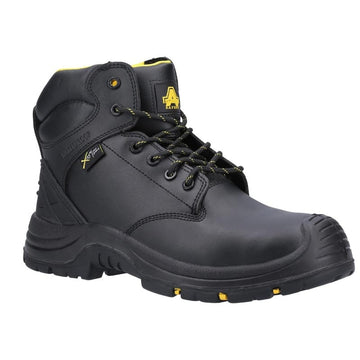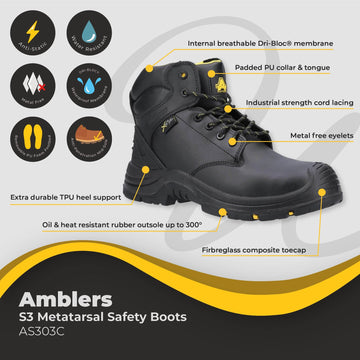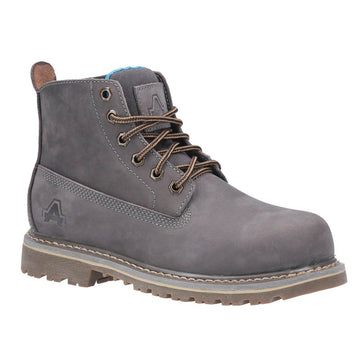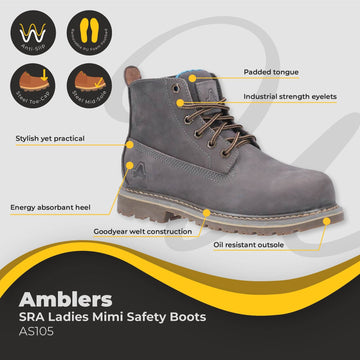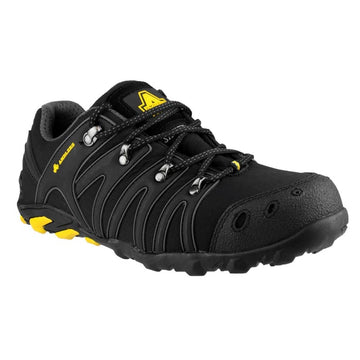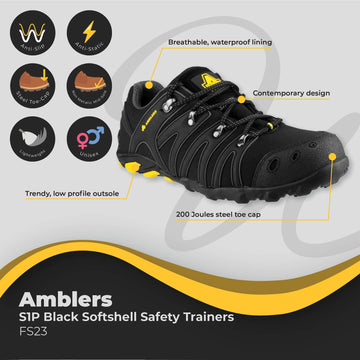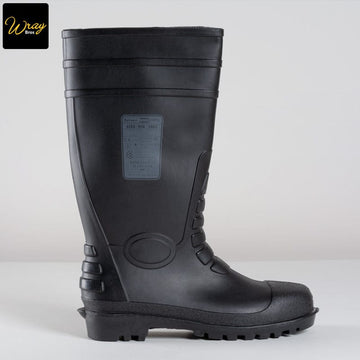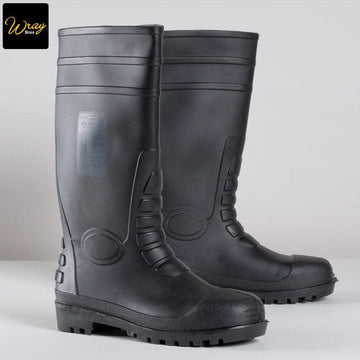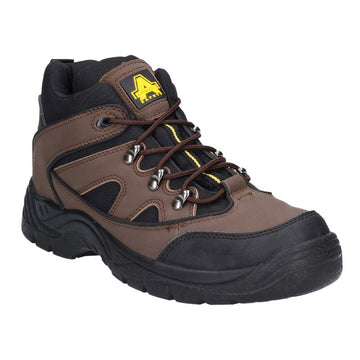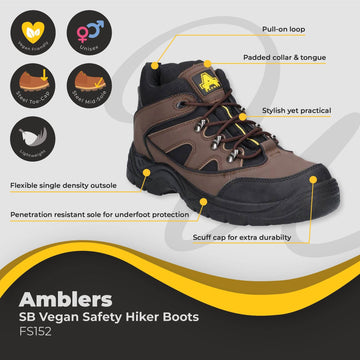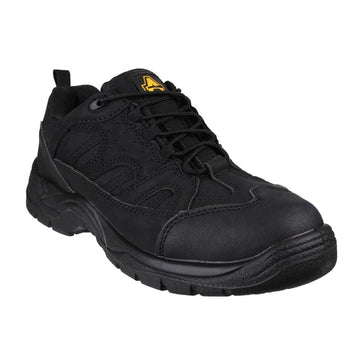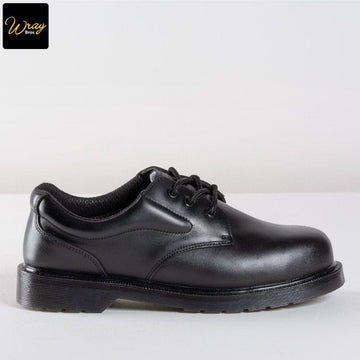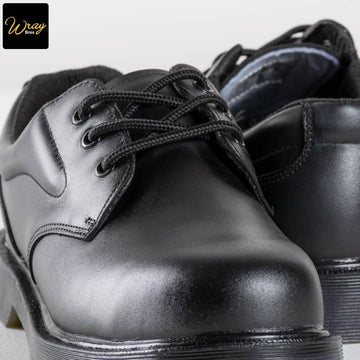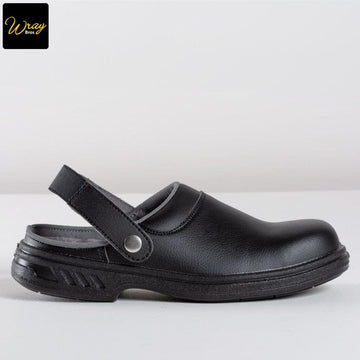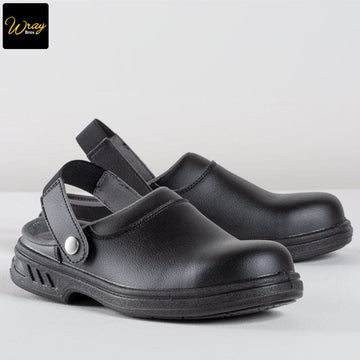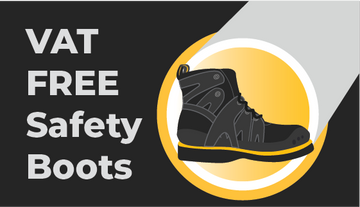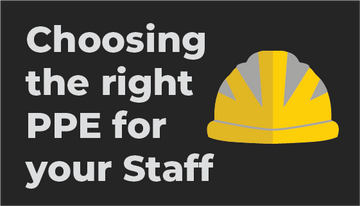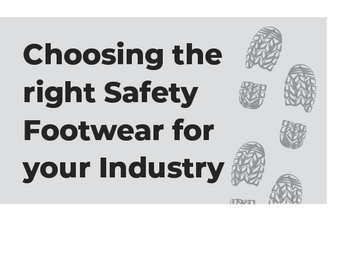How to Choose the Right Safety Footwear
The type of safety footwear available that should be used will depend on the users' working industry as well as the frequency and duration in which they will born worn.
Consider the following safety shoes and boots for different trades:
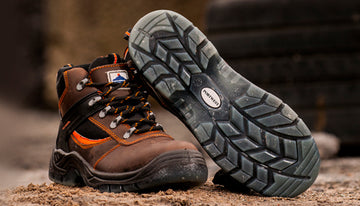
What industry are you in?

Production, construction and warehouse workers: Choose a durable safety work boot to protect your feet when moving heavy materials. A metatarsal option would also be recommended to avoid injury against potential falling goods.

Working with liquids or slipping hazards i.e. mechanics: Durable, oil and slip resistant work boots, trainers or shoes with a sturdy sole are best for to avoid injury. Wellington boots recommended if need greater leg protection.

Security workers and electricians: Safety footwear with a composite toe are recommended, for non-conductive purposes.

For those working outside: Steel toe-cap safety wellingtons or waterproof boots are a great option for working in the likes of garden.
Is more expensive Safety Footwear always better?
Obviously, the power of branding has a say on an item's ticket price. For example, looking at safety footwear, there is always that question do buyers associate a recognised, fashion brand coupled with price as an indicator of product quality? Ultimately, fashion-brand prices aside, we have found that the rule of 'you do get what you pay for' rings true.
Wray Bros has noticed a recent change in attitudes to price - there was a time when cheaper the better was the request. As budgets get tighter, the thinking has changed to consider the frequency of replenishing stock: quality over quantity mindset. The initial outlay may be more, but some buyers have found it better value to look at the lifespan of their workwear purchases by buying quality, rugged items fit-for-purpose rather than on price alone.
We do still believe cheaper options still have their place though - many well known brands will offer a more budget friendly line. If you're going to use a pair of boots every now and then, it makes sense that you might not need to spend a great deal on a pair. However, the more expensive the product, you'll find that they offer greater safety features and have a more modern design.
Look out for the Ratings
One aspect the buyer should consider are the EN standards a garment or safety boot meets is an indication of the standard the product is manufactured to meet. For footwear, you should look out for: EN ISO 20345.
European Standards (ENs) are documents that have been validated by one of the three European Standardisation Organisations (ESOs), CEN, CENELEC or ETSI. These should be used as an indication of the durability of the item.
Be sure to then look at how the product has been classified: whether it offers S1, S2 or S3 protection, or SRA, SRB or SRC slip resistance. Our guide to safety footwear ratings takes a closer look at what these codes mean.
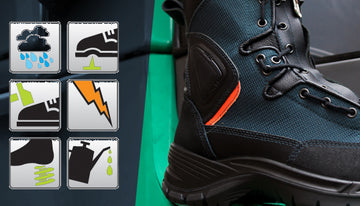
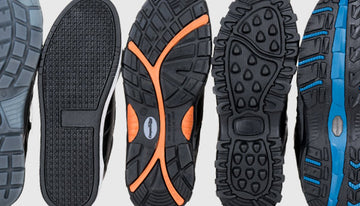
Details are in the Tread
Similar to a car tyre, the shape and design of the tread plays a role in gripping on wet floor surfaces. The purpose of the tread is create a tunnel in which to disperse the liquid and offer its slip resistance effect. The depth as well as the shape of the tread helps with the liquid dispersal and traction.
When looking at the sole, more open tread tends to be more suitable for the outdoors or solid terrain, whereas a softer and close tread pattern work well with fluid contaminants and indoor environments.
Make sure you and staff are checking the wear of the soles regularly, and ensure they are kept as clean as possible, to not impact the slip resistance.
How to Choose the Right Safety Footwear - The Options
Now that you've a better idea of what you need, what options of safety footwear are there out there? Like other areas of PPE, manufacturers have spent more time looking into what end users look for, and the designs available now have come on leaps and bounds even in just the last few years.
When browsing for your next safety footwear, ensure that your options have an impenetrable sole, uppers with a steel or composite toe-cap, and conform to EN ISO 20345. Safety footwear are available in the following styles:
- Regular safety boots for heavy duty work
- High-performance rubber safety wellingtons where users need longer length for protection against substances such as chemicals and fluids
- Composite safety shoes and boots that are similar to steel toe cap boots but are made out material suitable for those that may need to go through security detectors
- Metatarsal safety shoes are similar to composite and steel toe options, but also include a protective plate that covers the metatarsal part of the foot. They offer protection to the upper area of the foot between the bottom of the shin and toes
- Light, low-cut safety shoes for jobs that involve climbing
- Safety trainers available for those who may be looking for a more versatile, stylish option to also wear outside of the workplace
You can shop our safety footwear range below or head to the category page here.



